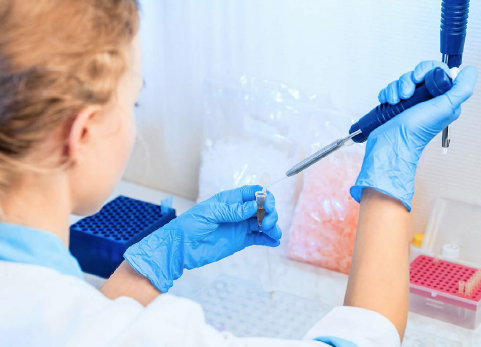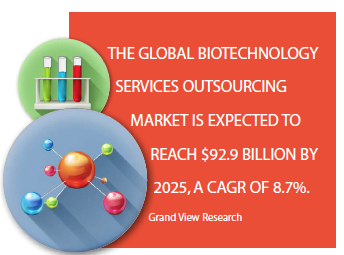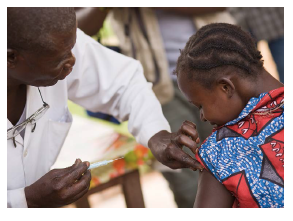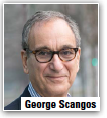Trends in Biopharma Innovation
 Over the last 20 years, a total of 667 innovative biopharmaceuticals have launched in the United States, finds a new report from QuintilesIMS. The characteristics of biopharmaceutical innovation have evolved in some respects over the past two decades. Most notably, drugs for the treatment of patients with cancer have increased their share of all launches from 11% in the 1996 to 2000 period to 28% in the most recent five-year period. During the same period, drugs launched with an orphan indication rose from 21% to 42% of all launches. The proportion of new biopharmaceuticals that are biologic in nature and primarily prescribed by a specialist also rose during the past 20 years.
Over the last 20 years, a total of 667 innovative biopharmaceuticals have launched in the United States, finds a new report from QuintilesIMS. The characteristics of biopharmaceutical innovation have evolved in some respects over the past two decades. Most notably, drugs for the treatment of patients with cancer have increased their share of all launches from 11% in the 1996 to 2000 period to 28% in the most recent five-year period. During the same period, drugs launched with an orphan indication rose from 21% to 42% of all launches. The proportion of new biopharmaceuticals that are biologic in nature and primarily prescribed by a specialist also rose during the past 20 years.
Other findings:
Nearly three-quarters of the molecules were launched by a company different from the one that filed the original patent.
The average time from original patent filing until U.S. launch for all molecules is 12.8 years, with upper and lower quartiles of 16.3 and 8.2 years, respectively.
The majority of drug launches achieve very modest levels of average annual sales in their first five years on the market. Over the 20-year period, 62% of the launches averaged less than $100 million in average annual sales during their initial five years following launch.
FDA Approves 22 Novel Drugs in 2016
In 2016, novel drug approvals included the first treatment for patients with spinal muscular atrophy, Spinraza; the first drug approved to treat Duchenne muscular dystrophy, Exondys 51; Nuplazid, a new drug to treat hallucinations and delusions in some  people with Parkinson’s disease, Ocaliva, a new drug to treat patients with a rare chronic liver disease known as primary biliary cirrhosis; and Epclusa and Zepatier, two new treatments for patients with hepatitis C.
people with Parkinson’s disease, Ocaliva, a new drug to treat patients with a rare chronic liver disease known as primary biliary cirrhosis; and Epclusa and Zepatier, two new treatments for patients with hepatitis C.
The field also includes new treatments for patients with ovarian cancer, bladder cancer, soft tissue sarcoma, and chronic lymphocytic leukemia—as well as two new diagnostic agents for detecting certain forms of cancer.
R&D Returns Continue to Decline
The pharmaceutical industry continues to face regulatory and reimbursement hurdles weighing on the research and development returns of pharmaceutical firms this year, finds the seventh annual pharmaceutical innovation study by the Deloitte UK Centre for Health Solutions.
Key findings:
Annual projected pharma R&D returns continue to decline to 3.7%
Peak sales per asset fell 11.4% year-on-year since 2010
Costs to bring a product to market stabilized in 2016, from $1,576 million in 2015 to $1,539 million
Smaller pharma companies have seen a decline in overall performance, but on average they continue to outperform their larger counterparts, generating returns up to three times higher
Novartis Launches SMS for Life 2.0 in Nigeria
 Novartis has launched of an innovative technology-based healthcare program called SMS for Life 2.0 in Kaduna State, Nigeria. The program aims to increase the availability of essential medicines and improve care for patients across the region by using simple, available, and affordable technology. SMS for Life 2.0 is a joint public-private partnership led by Novartis and supported by its partners, the Kaduna State Ministry of Health, and Vodacom. The program uses smartphones and tablet computers to improve access to medicines and increase disease surveillance, helping to provide better care for patients.
Novartis has launched of an innovative technology-based healthcare program called SMS for Life 2.0 in Kaduna State, Nigeria. The program aims to increase the availability of essential medicines and improve care for patients across the region by using simple, available, and affordable technology. SMS for Life 2.0 is a joint public-private partnership led by Novartis and supported by its partners, the Kaduna State Ministry of Health, and Vodacom. The program uses smartphones and tablet computers to improve access to medicines and increase disease surveillance, helping to provide better care for patients.
Top Global Pharma Companies Establish New Industry Standards Group
 Veeva Systems and six of the top 25 largest global pharmaceutical companies have announced the formation of Align Biopharma, a group dedicated to setting technology standards that will make it faster and easier for healthcare professionals (HCPs) to connect with the life-sciences industry. Founding members, with input from across the industry, will develop open standards and solutions for companies to streamline how HCPs get the drug and treatment information they need to deliver improved care to patients.
Veeva Systems and six of the top 25 largest global pharmaceutical companies have announced the formation of Align Biopharma, a group dedicated to setting technology standards that will make it faster and easier for healthcare professionals (HCPs) to connect with the life-sciences industry. Founding members, with input from across the industry, will develop open standards and solutions for companies to streamline how HCPs get the drug and treatment information they need to deliver improved care to patients.
“Common industry standards can make it more effective and efficient for life-sciences companies and healthcare professionals to connect," said Patrick Retif, VP IT, Global Commercial at Allergan. “Working together can help harmonize digital engagement and information access across the industry and create a better experience for our shared customers."
The rise of specialty drugs to treat complex diseases is creating a greater need for HCPs to have more timely and tailored information. As the number of new drugs increases so does the amount of information healthcare professionals require to facilitate patient engagement. There is significant potential for biopharmaceutical companies to use digital technology to inform HCPs on new or more complex treatments.
Initially, Align Biopharma will focus on developing two new standards to facilitate seamless digital engagement and simplify the HCP experience:
Identity management — definition of an identification and authentication standard to enable a single sign-on for HCPs to access online content — including websites, portals, virtual events, or webinars — across all companies.
Consent and communication preferences — definition of standards for consent and preference management so that there is consistency in how HCPs specify communication preferences with each company.
“Digital is transforming how life-sciences companies and HCPs collaborate and interact," says Paul Shawah, VP of commercial cloud strategy at Veeva. “With the proliferation of advanced treatments and digital channels, adhering to industry standards will simplify the challenges doctors face in getting the right information quickly."
Biopharmaceutical M&A Expected to Soar
The biopharmaceutical industry’s desire for inorganic growth is expected to intensify an already heated M&A environment in 2017.
This is according to the EY M&A Outlook and Firepower Report 2017. Key findings:
Total M&A volume across the biopharma industry exceeded $200 billion in 2016, a level unheard of prior to 2014 but in line with the deal volume of the previous two years. Big pharma was responsible for the lion’s share of this deal activity with over 70%.
Falling equity valuations and debt raised to fuel previous years’ M&A have resulted in roughly a 20% decline in firepower across the industry. Specialty pharma and big biotech companies have experienced the largest declines, down 62% and 24%, respectively, while big pharma dropped only 17%. (PV)
~~~~~~~~~~~~~~~~~~~~~~~~~
New Pharma Line Up
Christi Shaw to Rejoin Lilly
 Former Novartis President Christi Shaw is returning to Eli Lilly and Company, where she started her career in 1989, to lead the Bio-Medicines business beginning April 3. Ms. Shaw will succeed David Ricks, who became Lilly’s president and CEO on January 1.
Former Novartis President Christi Shaw is returning to Eli Lilly and Company, where she started her career in 1989, to lead the Bio-Medicines business beginning April 3. Ms. Shaw will succeed David Ricks, who became Lilly’s president and CEO on January 1.
In her new role, Ms. Shaw will lead important areas of potential growth for Lilly: immunology, neurodegeneration, and pain, as well as many of the company’s established brand products.
Emma Walmsley Will take Helm of GSK
At GlaxoSmithKline, Emma Walmsley takes over the reigns from Andrew Witty as CEO in March. Ms. Walmsley has served as CEO of GSK Consumer Healthcare since 2011.
Ms. Walmsley joined GSK in 2010 from L’Oreal where, over the course of her 17-year career, she held a variety of marketing and general management roles in the UK, Europe and USA. From 2007 she was based in Shanghai as General Manager, Consumer Products for L’Oreal China.
Former Biogen CEO George Scangos Heads Biotech Start Up
 Vir Biotechnology launched in January to develop cures, treatments, and preventions for challenging infectious diseases. Former Biogen CEO George Scangos is heading a team of scientific and industry leaders. The company is headquartered in San Francisco.
Vir Biotechnology launched in January to develop cures, treatments, and preventions for challenging infectious diseases. Former Biogen CEO George Scangos is heading a team of scientific and industry leaders. The company is headquartered in San Francisco.
Vir seeks to take a new approach, using breakthroughs in immune programming to manipulate pathogen-host interactions and taking a multi-program, multi-platform approach. Lead investors include ARCH Venture Partners and the Bill & Melinda Gates Foundation.



















